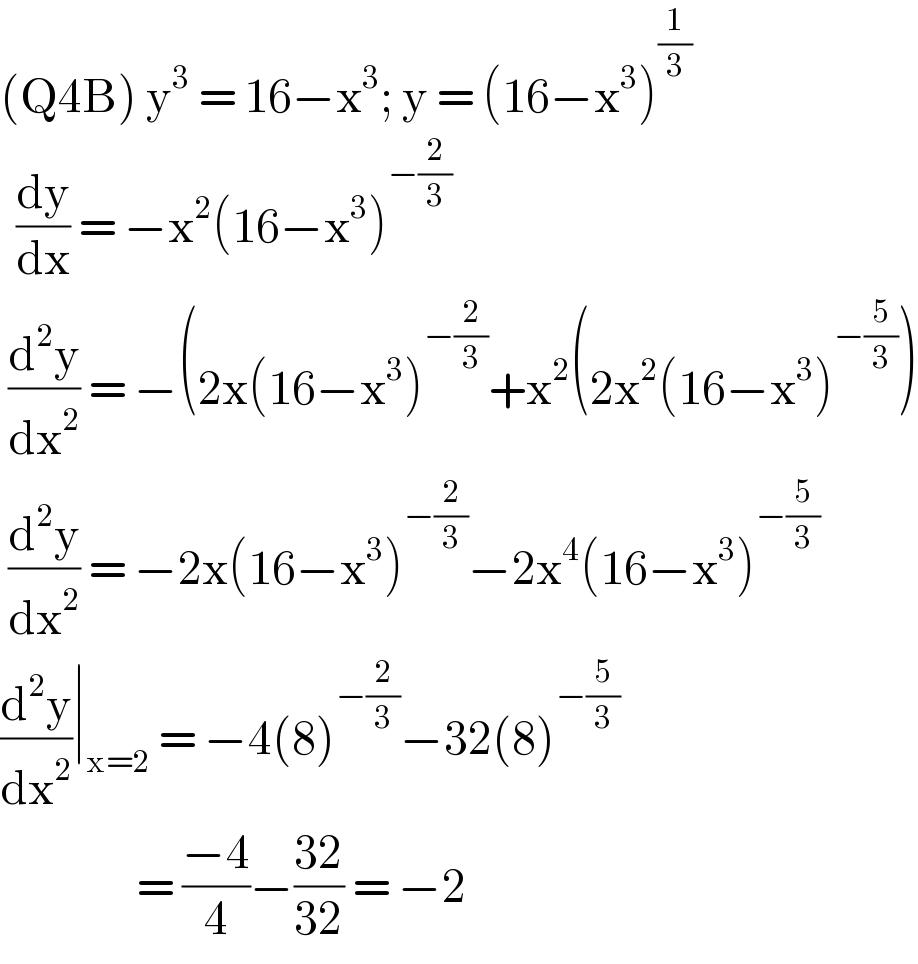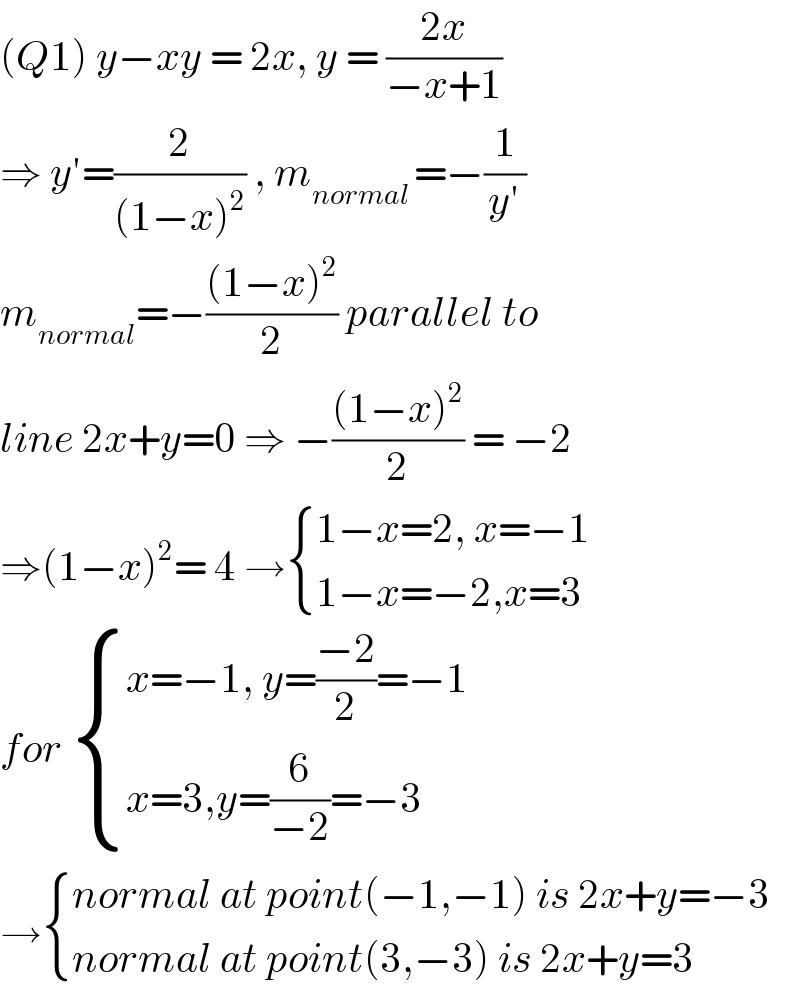
Question and Answers Forum
Question Number 112128 by mohammad17 last updated on 06/Sep/20

Commented by mohammad17 last updated on 06/Sep/20

Commented by bobhans last updated on 06/Sep/20

Answered by bemath last updated on 06/Sep/20

Commented by mohammad17 last updated on 06/Sep/20

Commented by bemath last updated on 06/Sep/20

Answered by bemath last updated on 06/Sep/20

Answered by bemath last updated on 06/Sep/20

Answered by mathmax by abdo last updated on 06/Sep/20

Commented by mathmax by abdo last updated on 06/Sep/20

Answered by mathmax by abdo last updated on 06/Sep/20

